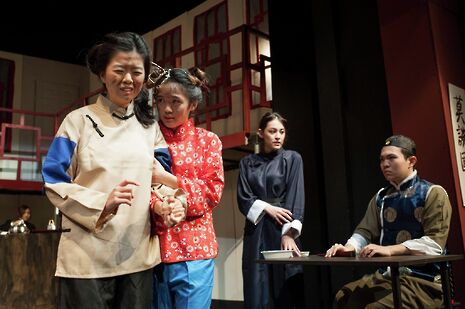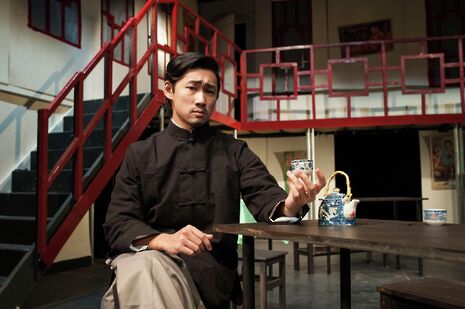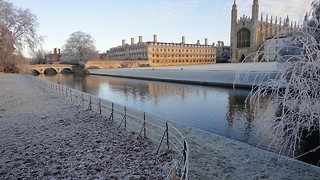Review: Teahouse
Ned Booker found aspects of the production entertaining, but suggests that at times the Qing era presented in Amateur Dramatic Society’s Teahouse left something to be desired

Set in the Yu Tai teahouse in Beijing, Lao Che’s play covers the history of China in the early twentieth century. Teahouse starts in 1898 in the final days of the Qing dynasty as reformers are suppressed by the government, progresses through the warlord period of the Chinese republic 20 years later and then finishes after World War Two during the civil war between Nationalist and Communist China. The audience is given a precis of this history through soliloquies from Li San (Cara Fung), a servant in the teahouse, and experiences life through the eyes of the Proprietress, Wang Lifa (Sophia Luu).
The real stars of the show were the servant Li San, Tang the Oracle (Gemma Jing) and Chang (Siyang Wei). Li San’s soliloquies were delivered with only the occasional hiccup, but otherwise were fluent and gave necessary exposition to those who hadn’t recently revised their Chinese history. The Oracle’s playful dialogue added levity effectively to her scenes and her progression from opium to heroin was one of the funnier moments of the show. Master Chang played a kind bannerman-cum-peasant well, and it was always a pleasure to see her back on stage.
Pock-Mark Liu’s (Yuhang Wu) scheming was generally acted well, and although his lines were sometimes a little stilted, he came across as an endearing pimp. He was somewhat hard to understand at points, but provided levity (a highlight was Liu and the Oracle’s agonising over what to call his legitimised pimping business). The Proprietress’s scenes were at times a bit lack-lustre and her efforts to seem imperious came out flat, but the character was nonetheless an intriguing addition to the dynamics of the play.
The overall ensemble performance could yet be tightened up. Many of the extras in the first act drew too much attention from the main dialogue or blocked it from view altogether, and often characters had their backs to the audience while speaking, making it difficult to engage with their speeches. When minor characters did have lines they were often stilted or difficult to understand.However, minor characters were at times used effectively. For example, the scene with two friends wanting to find a prostitute to have a threesome with was well carried off.

Props were a mixed bag, with the teapots and accoutrements being used frequently and effectively. Other items used ruined the mood somewhat: when one of the pistols used to threaten the Proprietress had its slide fall back it looked silly, and removed some of the dramatic tension of the scene.
Initially the staging seemed respectably arranged, but as the teahouse’s fortunes go from bad to worse the shabbiness in the staging becomes increasingly apparent. While I felt that this could have been intentional, more could have been done with this to make this apparent to the audience, and to develop the impression of deterioration. The costumes were mostly good, but for some of the beggars and down-on-their-luck patrons their patched robes felt as though they could have been made more of. The makeup in the Qing era also left a little to be desired.
As a whole, I quite liked the story and several of the characters really shone out to me. Hopefully the fact that the initially impressive costumes and setting become a little drab was intentional, but these aspects could have been made clearer to the audience. With a small amount of change in position of the ensemble I think more attention could be pulled to where it needs to be, but I do think some of the action lacked energy. It was an interesting telling of an interesting period of Chinese history and I thought the translation was appropriate for a British audience, with effective use of English idioms and swearing. There is talent in this production, but at times it could be tweaked and redirected
 Comment / Anti-trans societies won’t make women safer14 November 2025
Comment / Anti-trans societies won’t make women safer14 November 2025 News / Controversial women’s society receives over £13,000 in donations14 November 2025
News / Controversial women’s society receives over £13,000 in donations14 November 2025 News / John’s rakes in £110k in movie moolah14 November 2025
News / John’s rakes in £110k in movie moolah14 November 2025 Comment / Be mindful of non-students in your societies12 November 2025
Comment / Be mindful of non-students in your societies12 November 2025 News / Home Office denied PhD student visa to attend graduation14 November 2025
News / Home Office denied PhD student visa to attend graduation14 November 2025









